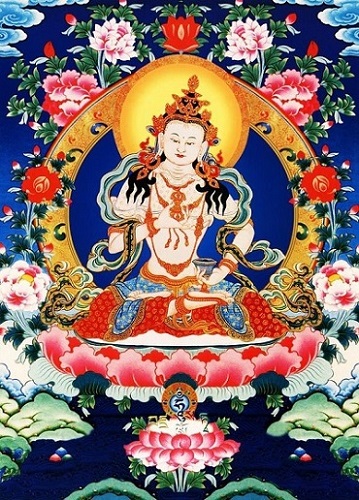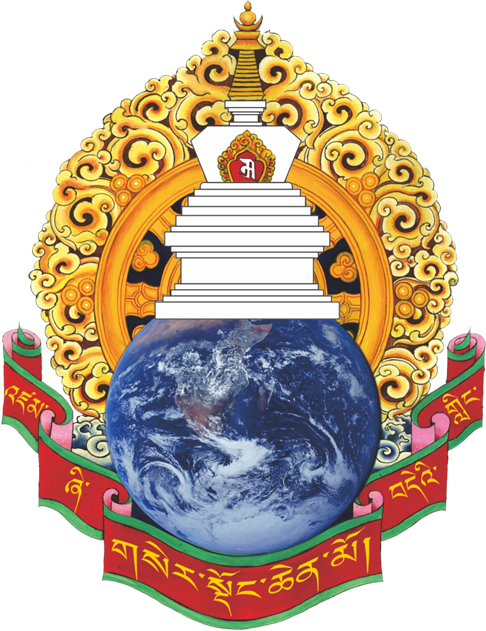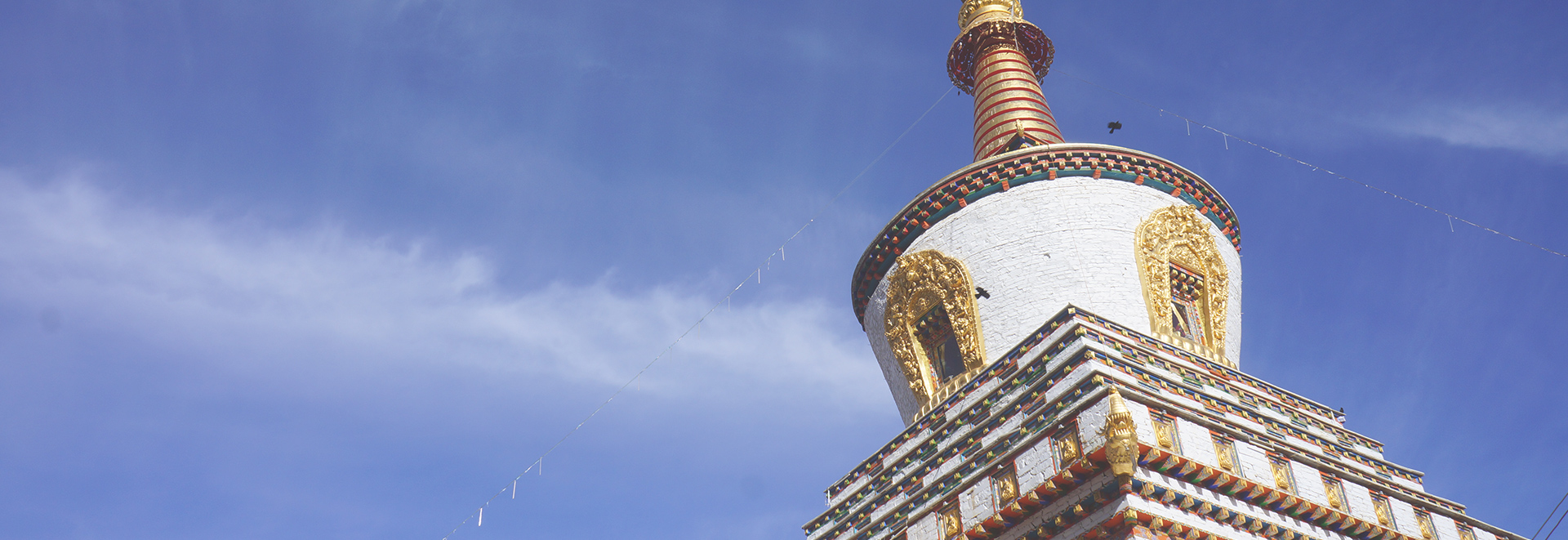Longchen Nyingtig Lineage
LINEAGE

The Dharmakāya dwells in the state of inner clarity and the absolute nature of phenomena. Without any modification of its own nature by the Dharmakāya, the self-appearing Sambhogakāya, the enjoyment body, manifests spontaneously. From the essence of the Dharmakāya, the manifestative aspect of primordial wisdom, the myriad Buddha bodies and pure lands, arises as self-perception, just as the rays of five colors appear from a crystal because of the rays of the sun. In the Sambhogakāya the teacher and disciples are united in the sphere of the same realization. The teacher does not give teachings; rather, they are self-arisen in the sameness state. They arise spontaneously as self-perception in a fivefold manner:
PLACE: The self-perceptive “unexcelled pure land of beautifularray”
TEACHER: The Buddhas of the five classes, such as Vajrasattva(Akṣhobhya), adorned with the thirty-two marks and eighty signs of excellence
DISCIPLES: The Buddhas, infinite as the ocean, who appear as the self-manifestation of the primordial wisdom, which is not other than the teacher himself
TEACHING: Great luminescent vision, ineffable and free from the conceptualizations of indications and words
TIME: Changeless; the ever-continuing cycle of time
There are two types of transmission within the Sambhogakāya:
1. In the unexcelled pure land, teachings of tantra are given by Samantabhadra to the self-perceptive Sambhogakāya Buddhas, who are none other than Samantabhadra himself, while the teacher and disciple dwell in the state of undifferentiated realization. This is called the transmission of the same mind of teacher and disciple.
2. The disciples whose minds differ from the mind of the teacher become, by the teacher’s blessing, of one mind with the teacher. This is called the transmission of the becoming inseparable of the mind of teacher and disciple.
The five primordial wisdoms of the Sambhogakāya are as follows:
1. Primordial wisdom of ultimate-sphere (dharmadhātujñāna): It is the inseparable union of three aspects: the great emptiness (openness), which is the basis of liberation, pure from the beginning; the basis of self-clarity, natural light of primordial wisdom; and the ultimate sphere of awareness wisdom.
2. Mirrorlike primordial wisdom (ādarshajñāna): The appearances appear in the empty-clarity awareness in the mode of unobstructedness, like the arising of reflections in a mirror. This primordial wisdom is the aspect of the basis for the arising of the two form bodies, Sambhogakāya and Nirmāṇakāya. In response to disciples capable of seeing and training, the two form bodies of the Buddha and the three following primordial wisdoms naturally arise as a reflection.
3. Primordial wisdom of evenness (samantājñāna): It is the primordially liberated great evenness wisdom, in which all the appearances of the form bodies of the Buddha arise according to the perceptions of disciples, without falling or remaining in any of the extremes.
4. Discriminating primordial wisdom (pratyavekṣhaṇajñāna): it is the primordial wisdom that clearly sees all knowable phenomena simultaneously without any confusion.
5. Primordial wisdom of accomplishment (kṛityānuṣhṭhānajñāna): It is the primordial wisdom that accomplishes one’s own goals in the state of intrinsic awareness, and spontaneously serves all the needs of others, without any effort, like a wish-fulfilling jewel.
Dharmadhātu primordial wisdom sees what is, the absolute truth; and the four other primordial wisdoms see how things appear, the relative truth.
*Above Contents from Masters of Meditation and Miracles: Lives of the Great Buddhist Masters of India and Tibet by Tulku Thondup (1999).


